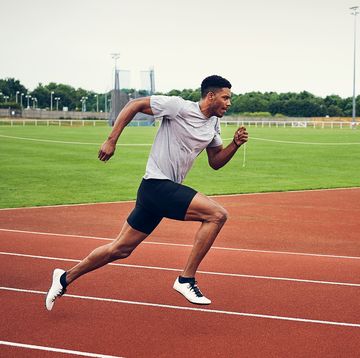Josh asks: I’m training to race a half marathon this spring. Due to the weather, most of my runs have been on a treadmill. Will running indoors affect my performance?
You’re wise to take your runs inside when weather conditions could slow you down or leave you injured. Logging miles indoors will keep you on track for a strong race. Here’s why:
Best wireless headphones
Treadmill running allows you to focus on the purpose of the workout without the risk of falling on slick surfaces, or the aches and pains that can develop from running on cold, tense muscles. When we run in the cold, it takes longer for the body to warm up, and if there’s snow or ice, it can compromise your form and create muscular tight spots. You expend a lot more energy on challenging weather days, and the treadmill allows you to invest your energy where it counts: to get in your long, speed, tempo, and other runs. Plus, your body will recover more readily with an easy treadmill run than with an easy run outdoors in poor weather.
Convenience is a partner with consistency, the root of successful performance. Using a treadmill lowers your risk of missing workouts due to weather issues and darkness. You can get in your workout anytime - you don’t have to worry about finding a safe path or dodging cars in the dark - and you don’t need to worry about toting fuel or fluid.
The best leg machines for runners
Because you can adjust the incline on treadmills, you can simulate the exact ups and downs of the race you’re training for. Some treadmills even allow you to pre-load real course profiles and will automatically adjust the incline to follow the course. One of my clients is training for the Boston Marathon and I had him elevate the back of his treadmill to simulate the demands of the downhill course.
How to run on the dreadmill without losing your mind
In the late-‘90s, researchers discovered runners have reduced stride lengths and higher stride frequencies on a treadmill as compared with ground running due to the feeling of instability while running on a treadmill. All of these can help improve your form and reduce impact forces on the body.
Although treadmill running isn’t exactly the same as road running, research has shown that treadmills can be quite effective training tools, and that setting the incline to one percent can help account for the lack of wind resistance you’ll experience. (That said, more recent studies have found that if you’re running at a pace slower than 7:30 per mile, no upward adjustment is necessary.) I recommend running on a varied one to three percent incline course to avoid developing biomechanical issues. It’s also good to know that many find their relative perceived effort to be higher on the treadmill, so it’s wise to run by feel and effort rather than pace.
As you make your way closer to your race, it’s wise to transition some of your runs outdoors to better simulate the conditions of the race and adapt to the elements and the difference in stride, gear, and more.
READ MORE: How effective is treadmill running compared to running outside?
READ MORE: How to run on the dreadmill without losing your mind













